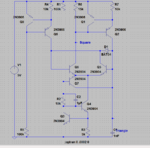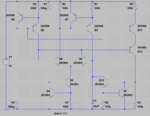iimagine
Member level 5

re: Triangular Wave Generator
My two yen:
the flattening out of the top of the waveform looks to me like saturation...awfully close to 5 volts.
/QUOTE]
I suspected this as well, I will reduce the voltage down to half by using R4
- - - Updated - - -
Well, by introducing R4 to the circuit as originally drawn, cutting down ref voltage to half, the flat line is now gone (see attached image). Only the early effect still remains
With all components being the same as post #13.
R3/R4 = 470k/470k
- - - Updated - - -
Errr.....some how my post title is changed, and I cannot post a new respond without being seen as --Updated---















